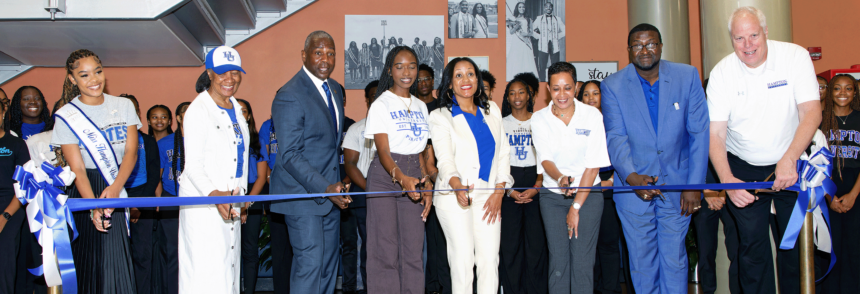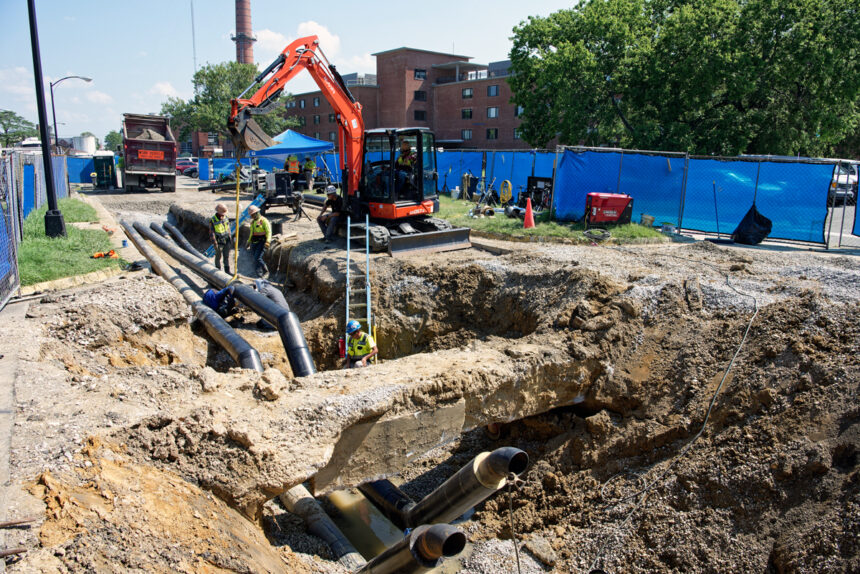A Major Milestone in Hampton’s 10-Year Strategic Plan of Elevating Academic Excellence

Hampton University President Darrell K. Williams is setting a new standard for academic environments with an ambitious campus upgrade. This transformative initiative, encompassing renovations and state-of-the-art enhancements across 13 buildings, marks a pivotal moment in the institution’s storied history.
“Investing in our campus is investing in our future,” said President Williams. “These upgrades are not just about bricks and mortar; they’re about cementing our legacy as an institution committed to providing a first-class education. Our mission is clear: to offer the #1 student experience in America. This ambitious project brings us closer to that goal and also represents a significant milestone in our ten-year strategic plan, highlighting our commitment to elevate academic excellence, streamline operations, and significantly improve our infrastructure.”
President Williams, an esteemed alumnus and member of the class of 1983, remarked that the administration is continuing to ensure that Hampton students have access to an environment that is not only conducive to learning but also inspiring.
“We believe that our campus is more than just a place of learning; it’s a living testament to our commitment to excellence, heritage, and the future of our students,” President Williams continued. “Recognizing the evolving needs of our community and the importance of a stimulating environment for education, we embarked on significant campus upgrades and improvements.”

Major Campus Renovations
Among the campus upgrades are Clarke Hall, Armstrong Hall, the Little Theater, Dett Auditorium, and Moton Hall, which has been innovatively converted from traditional dormitory spaces to suite-style living accommodations complete with a fitness center, gaming room and cafe.
Additionally, Harkness, Holmes, White and Twitchell Halls now boast innovative fitness rooms, while, the Student Dining Hall, Holly Tree Dining Hall, and the Presidents’ House, the oldest structure on campus and new residence of the First Family, along with Armstrong Stadium, have all seen significant improvements. These upgrades not only refresh these spaces but also redefine the living and learning environments for students, faculty, and staff.
“The renovations have transformed the campus,” said Barbara Inman, Ed.D., vice president, Student Success and Enrollment Management. “It’s amazing to see how these changes have not only enhanced the aesthetic appeal but also improved the functionality of our spaces. It truly feels like a new era for Hampton University.”

Environmental Impact
At the heart of these enhancements is an overarching commitment to sustainability and efficiency, spearheaded by a comprehensive energy infrastructure project. Under the guidance of Randall C. Hardy, director, Physical Plant, the university is transitioning from steam to a district water system for heating and cooling. This pivotal shift, aimed at reducing the campus’ carbon footprint and promoting energy efficiency, began in January of 2022, and is scheduled to be completed by June 30th. This initiative underscores Hampton University’s dedication to fostering a cleaner, greener campus.
“These upgrades represent the university’s commitment to excellence, innovation, and sustainability, setting a new benchmark for higher learning institutions across the nation,” said Hardy.
Traditional steam plant heating systems, which have been in use for over a century, rely heavily on fossil fuels, Hardy explained. These systems burn coal, oil, or natural gas to generate steam, which is then distributed throughout the campus to provide heat. While effective, this process is energy-intensive and releases significant amounts of carbon dioxide and other pollutants into the atmosphere.
By contrast, a district water system for heating and cooling uses water as a medium to transfer thermal energy. This system can be integrated with renewable energy sources such as solar or geothermal power, drastically reducing reliance on fossil fuels. For Hampton University, this means a substantial decrease in carbon emissions by at least 60 percent, according to the United Nations Environment Programme, aligning with global efforts to combat climate change.
This increased efficiency translates into significant cost savings for the university. Reduced energy consumption lowers utility bills, freeing up financial resources that can be redirected towards academic programs, scholarships, and other campus improvements.
Walking around campus it is evident that Hampton University is embarking upon a new era.
“These efforts were not just about aesthetics or infrastructure; they were a crucial investment in our students’ success and well-being,” said Inman. “A modern, well-maintained campus directly impacts student morale, recruitment, and retention, offering an environment that is conducive to learning, research, and personal growth.”
Wireless Upgrade
In addition to building upgrades, Hampton University has achieved a significant milestone by upgrading its wireless infrastructure from 10G to 100G, placing the institution among an elite group of just ten Historically Black Colleges and Universities (HBCUs) that have reached this level of technological advancement. This upgrade marks a significant step forward in enhancing the university’s capabilities to support cutting-edge research, academic excellence, and a more connected campus experience.
The transition to 100G wireless infrastructure comes at a crucial time as universities across the nation are increasingly relying on high-speed internet to facilitate remote learning, digital collaboration, and access to vast online resources.
“Upgrading to 100G is a game-changer for Hampton University,” said Dr. Adebisi Oladipupo, vice president for Information Technology. “It ensures that our students and faculty have access to the fastest and most reliable internet speeds, which is essential for academic research, online learning, and staying connected in today’s digital age. This upgrade not only enhances our current capabilities but also positions us for future growth and innovation.”
The new 100G infrastructure will support a wide range of applications and services, from high-definition video conferencing to data-intensive research projects. It will enable seamless connectivity for students and faculty, whether they are on campus or engaging in remote learning. This upgrade is part of Hampton University’s broader strategy to invest in state-of-the-art technology that enhances the overall educational experience and prepares students for success in a rapidly evolving digital landscape.
President Williams explained that the upgrades and improvements are a testament to Hampton University’s unwavering belief in the potential of every Hamptonian, “and our commitment to providing them with the best possible environment to discover, learn, and thrive.” “By investing in state-of-the-art facilities and advanced technological resources, we are setting a new standard for excellence in education,” said President Williams. “This is more than an investment in our campus; it’s an investment in our future leaders who deserve the best we can provide. We look forward to seeing the positive impact these improvements will have on our community and are excited about the future of Hampton University.”
